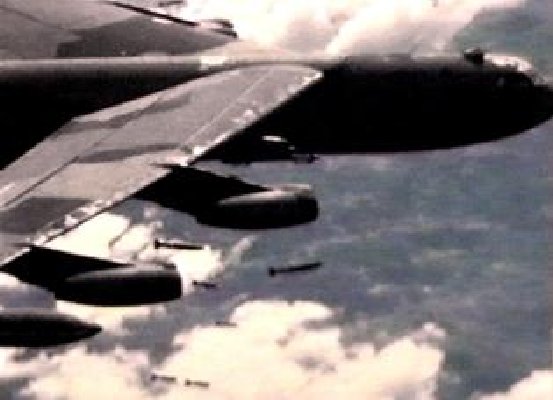Brain Injury Awareness Month: Traumatic Brain Injury (TBI)
March 5th, 2010 by xformed

- Image via Wikipedia
Via backchannel, a request to highlight the “signature” wound of the current war: Traumatic Brain Injury.
March is Brain Injury Awareness Month for the Brain Injury Association of America. Pass the Word, please, as you can and know this is a very probable issue with our injured Vets.
For those who have long supported the Soldier’s Angels Voice Activated Laptops for Our Injured Troops (VALOur-IT), this is one of the things the program has been addressing, along with the coputer contact with the world, by providing GPS Units for those wounded service members who are getting out and about. The reason: TBI has an associated symptom of loss of short term memory, and the GPS Units help remind the driver where they were headed. (Note: You don’t have to wait until this November to donate to VALOur-IT…SA will be happy to accept donations all year long…even today to help this great cause)
Below is the article Chelsea asked if I could post to help get attention to the cause:
Traumatic Brain Injuries in the Military
Traumatic brain injury (TBI) is becoming a common wound of modern warfare. It has even been coined the “signature wound†of the War on Terror. While TBI is becoming more prevalent in wartime activity, many service men and women continue to go undiagnosed. Institutions, like the US Department of Veterans Affairs, are working to make quick and accurate diagnoses in order to prescribe appropriate and effective treatment.
TBI is caused by forced trauma to the head, either by being shaken or hit. The severity of a TBI varies from case to case, but symptoms range from mild concussions to a debilitating state. The majority of TBI’s acquired by military personnel are classified as mild traumatic brain injuries (MTBI). Initial symptoms of MTBI consist of loss of consciousness, disorientation, loss of memory, headache, and temporary loss of hearing and vision. They are often partnered with anxiety, irritability, difficulties processing information, limited concentration amongst other problems experienced down the road. While MTBI is most common amongst the men and women of the armed forces, more severe cases of TBI are happening much more frequently and often require the victim to attended specialty rehabilitative nursing centers, like CareMeridian.
The most common cause of a TBI in the military is due to blasts. There are three degrees of blast injuries where a TBI is common; Primary (due to blast itself), Secondary (due to objects being propelled by a blast) and Tertiary (due to a collision with a third party object). According to the Veterans Health Initiative, active male members of the military from the ages 18-24 are hospitalized with a TBI at a rate of 231 per 100,000 and females 150 per 100,000. Based on military force projections this would mean that 4,141 military personnel are hospitalized on average each year with a TBI, and these numbers often rise during wartimes.
The best prevention for veterans to avert the long-term effects of a brain injury is to recognize the symptoms of a TBI. Once the symptoms are identified an individual should take basic precautionary measures in order to begin the healing and recovery process until a more specific diagnosis can be made.
Service men and women give so much to protect this country and they deserve to come home to a happy and healthy life. Creating awareness about TBI will help ensure their long term health. By helping our veterans, their friends and their families recognize the early warning signs of a TBI, treatment can be sought as early as possible.
Related articles by Zemanta
- Canadian military releases brain injury report (ctv.ca)
- The Invisible Wounds of War (edkimmd.blogspot.com)
- “Mild” TBI and the “Silent Epidemic” (edkimmd.blogspot.com)
- What Is a Concussion and How Bad Can It Be? (bleacherreport.com)
- Brain Scans Reveals Invisible Damage Of PTSD (huffingtonpost.com)
- Traumatic Brain Injury and Learning how to Love and Accept Myself Part 7 (secondchancetolive.wordpress.com)
Category: Air Force, Army, Biology, Blogging, Charities, Coast Guard, Education, Jointness, Marines, Military, Military History, Navy, Public Service, Science, Supporting the Troops, Valour-IT | 5 Comments »
![Reblog this post [with Zemanta]](http://img.zemanta.com/reblog_e.png?x-id=0a7b7e67-151b-49f0-9044-db0aeb4e7747)



![Reblog this post [with Zemanta]](http://img.zemanta.com/reblog_e.png?x-id=5819fac6-fa2d-4077-8686-0446aa02fc3e)


![Reblog this post [with Zemanta]](http://img.zemanta.com/reblog_e.png?x-id=1c204fc3-4afc-4328-8edb-553dd0ff8553)


![Reblog this post [with Zemanta]](http://img.zemanta.com/reblog_e.png?x-id=1e68de93-0ae6-48ee-803f-fec6c1227f82)

![Reblog this post [with Zemanta]](http://img.zemanta.com/reblog_e.png?x-id=b0d312b3-abeb-47bc-a796-a5d0e5c45805)